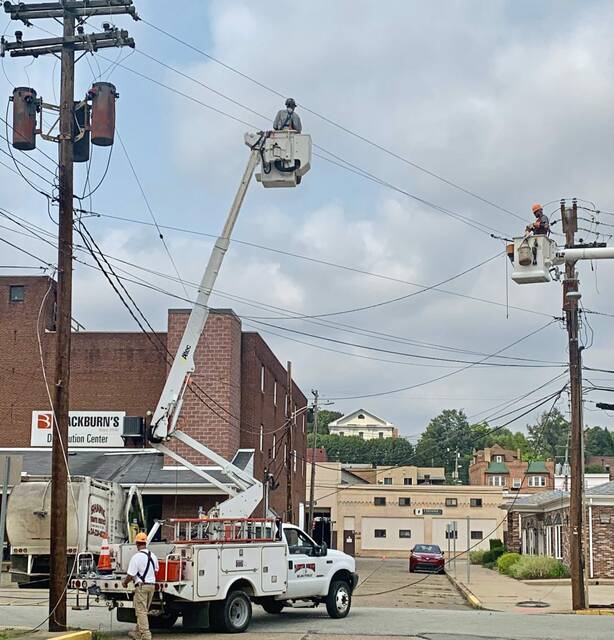Citing supply costs, Tarentum electric rates to jump 3%-5% every year for 5 years
Electric rates in Tarentum are going up in 2024 — and likely for at least the next four years afterward — to combat supply costs that are set to double.
Council voted Tuesday night to approve a new rate schedule that will increase the cost from 13 cents to 15.2 cents per kilowatt.
The average house in Pennsylvania uses 851 kilowatts of electricity a month, according to EnergyBot.
In Tarentum, customers average about 647 kilowatts a month, meaning costs will climb about $13 a month, from $85 to $98.
That’s about $150 a year.
There are some customers who use less and others who use upward of 3,000 kilowatts a month. Their bill will jump $66 a month, or about $790 a year.
Customers of Redcat Power can expect to see fees go up 3% to 5% a year throughout the five-year contract.
“What this does is provide pricing stability so they won’t have to worry about it jumping 17% or 42% in one year,” Borough Manager Dwight Boddorf said. “It also helps with the borough’s finances for the long term.”
Council President Scott Dadowski said borough residents still will pay the least of all neighboring municipalities for electricity.
West Penn Power charges 15.6 cents per kilowatt; Duquesne Light charges more than 20 cents.
Tarentum is among 35 municipalities in the state that operates its own electrical distribution system. The borough purchases electricity wholesale and delivers it to about 2,500 customers, with profits used to supplement general fund operations.
Boddorf recommended a five-year plan to provide price stability, which is beneficial to people on fixed incomes and others struggling to make ends meet.
“I don’t know how we tell a resident on a fixed income that they have to pay 60% more one year,” he said.
The borough’s energy contract with its Chambersburg supplier is ending. A new four- to five-year contract is being negotiated with costs to the borough expected to skyrocket from $30.56 per megawatt hour of energy to $58 to $63.
Council heard recommendations from an energy specialist on the best ways to move forward. Members agreed the smartest move is to lock in a price to keep fees stable over a several-year period.
With this option, the borough pays the same whether the market goes up or down.
“We don’t have the resources to watch the energy market weekly or daily and make buying decisions,” Boddorf said.
The annual increases will protect residents from a dramatic price hike and will keep money flowing in for infrastructure and economic development projects in the borough.
Using a five-year forecast, council predicted rates to increase no more than 5% each year of the new contract.
“By doing a 3% to 5% increase every year, it provides for the same level of services that we already have,” Dadowski said.
There were other pricing strategies, Boddorf said, but the borough would have had a significant financial problem by 2025.
Rates would have jumped by 50% or the borough would have to cut electric staff.
The borough only has one lineman, so that wasn’t an option.
Tawnya Panizzi is a TribLive reporter. She joined the Trib in 1997. She can be reached at tpanizzi@triblive.com.
Remove the ads from your TribLIVE reading experience but still support the journalists who create the content with TribLIVE Ad-Free.

